Since pheasant backs have a sort of cucumber taste to them, here I make them into pickles with jalapeno and dill. It's a good option for preserving pheasant back mushrooms, which I don't usually dehydrate.
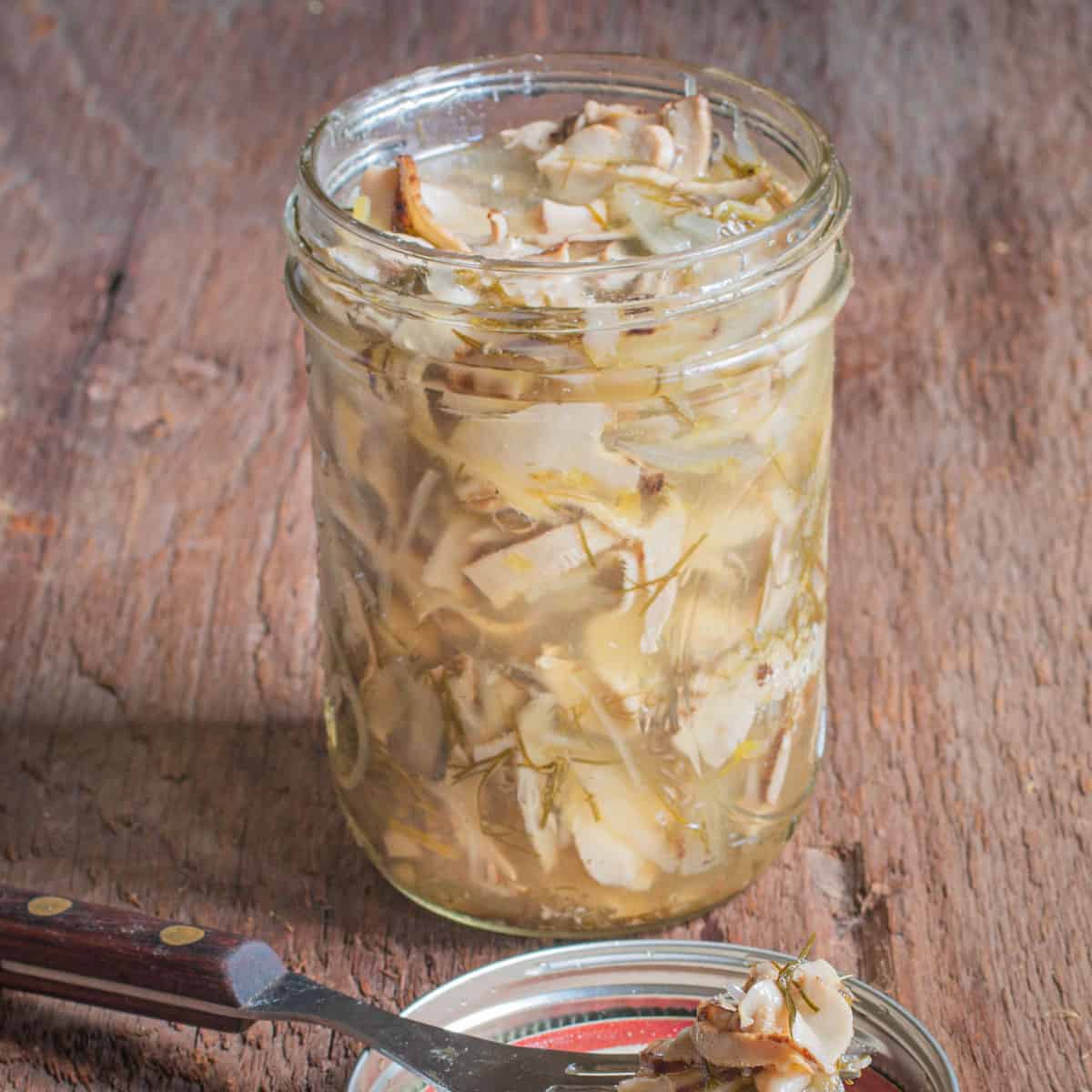
I have a few friends in particular that go out every year for morels and consistently can't grab enough for a meal. But, one thing they can usually count on are a few dryad saddles / pheasant backs (Cerioporus squamosus). The flavor is strong, and some people don't care for it, but, however you feel about them, you have to agree it's a fascinating flavor, and a rare one in the mushroom world, although St. George mushrooms I've had taste eerily similar.
If you haven't had them, dryad saddle mushrooms have a sort of strong, cucumber-y, melon rind aroma, and it makes for some really interesting dishes. If you took a peek at the Noma Guide to Fermentation I mentioned when making meat garum a few months back, know that there are recipes in there for wild mushrooms too, including a sort of fermented soy sauce made specifically with dryad saddles.
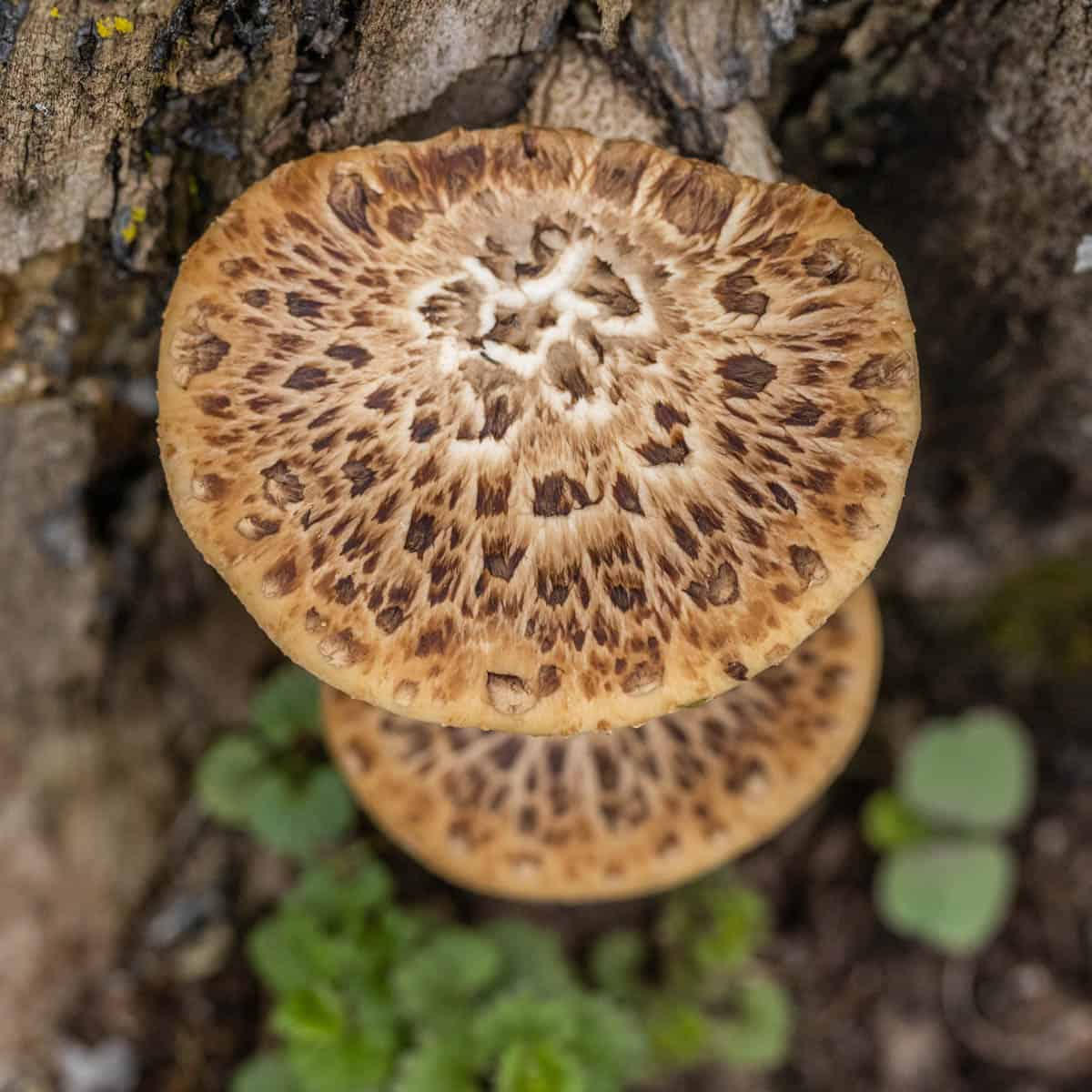
Today is just a fun pickle idea for you. Part of the fun of these mushrooms is that their flavor is not mushroomy, which opens doors for flavor pairings that we might not necessarily think of, as instead of earthy mushroom, with dryad saddles, I think cucumber.
I don't like a lot of sweetness in my mushroom pickles though, as you would get with traditional bread and butters, and I didn't want to ferment them like sour dills, so I went in another direction: dilly beans.
If your not familiar, dilly beans are green bean pickles you can find all over the Midwest, my favorite being the spicy hot ones you'll probably see on a Wisconsin cheese or charcuterie plate flavored with jalapeno, or crushed red pepper, swimming a vinegar brine kissed with dill.
At the end of the day this is just a basic pickle, but there's a couple tricks for working with dryad saddles hidden in the recipe: complimenting the flavor of the mushrooms, and working around the texture, both of which are covered somewhat in my introductory post on these.
Shave those dryad saddles!
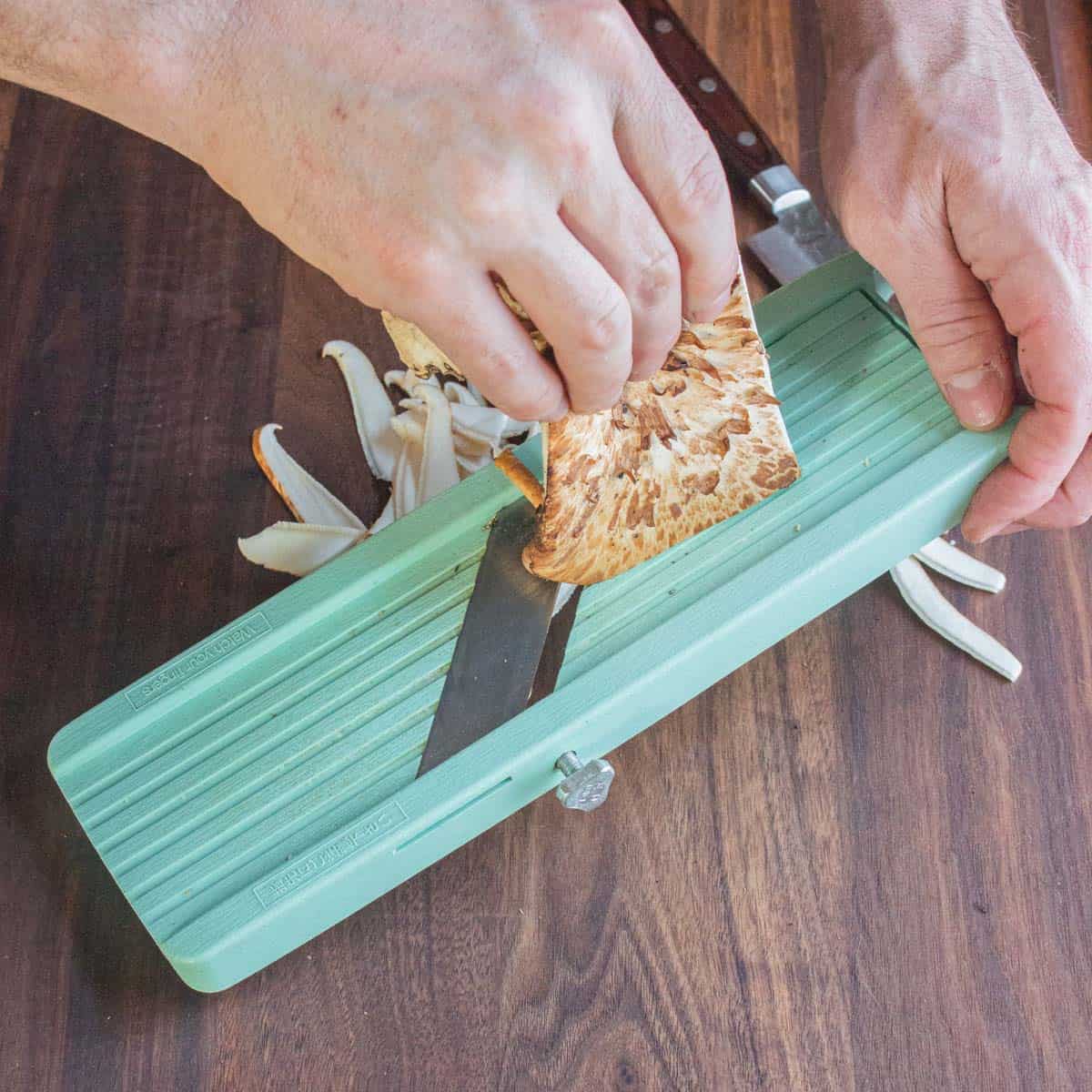
Dryad saddles have a terrible reputation for being tough, and it's well earned, but shaving on a mandoline can work wonders with them. Another good trick I mention in my original post too, is that since the size can, but isn't always necessarily an indication of toughness.
I test if I can scrape the pores off of the underside of the cap with my fingernail, if the pores come off easily, I take the mushroom home, if they don't, most of the time I leave them. That being said, even some older mushrooms can become tender when shaved on the mandoline, it just takes a little experimenting, and sometimes they still fool me.
These were great on a sandwich, warmed up and paired with grilled fish, warmed up and mixed into a salad with cucumbers, fresh greens and goat cheese, you get the idea. Just like with all the other mushroom preserves on this site, know that they're more than something to eat cold.
Warming up some pickled dryad saddles in a pan can be a great garnish to all kinds of things, assuming of course, that you like the taste of dryad saddles.
Pickled Dryad Saddle Mushrooms with Dill and Jalapeno
Ingredients
- 1 lb Young dryad saddle mushrooms shaved thinly on a mandoline, woody ends discarded to yield 1 lb after shaving
- 4 ounces shallot roughly 2 large shallots
- 1 cup champagne vinegar
- 2 cups water
- 1 tablespoon kosher salt
- 1 oz fresh dill chopped
- 3 large jalapenos or 5 serranos, depending on your heat tolerance
- 1 large clove of garlic finely chopped
- 1 tablespoon flavorless cooking oil.
Instructions
- Wearing gloves, slice the jalapenos into ¼ inch slices on the mandoline. Cut both ends off the shallots, then cut in half the long way, and shave end to end on the mandoline.
- If you don't have a mandoline, just slice everything as thin as you can, but don't complain to me about the mushrooms being tough.
- In a 2 qt saucepot, sweat the shallot and garlic in the oil for 2 minutes, then add the mushrooms and salt and sweat, stirring occasionally, until wilted.
- Add the dill, jalapenos and water and bring the mixture to a simmer for a few minutes. Add the vinegar, simmer gently for a few minutes more, then pack the mixture into pint jars and process in a water bath or refrigerate.
- Label, date, and reserve until needed. Canned in a water bath, the pickles can be stored at room temperature as long as they're unopened for a long time, at least until the next season.
Nutrition
More

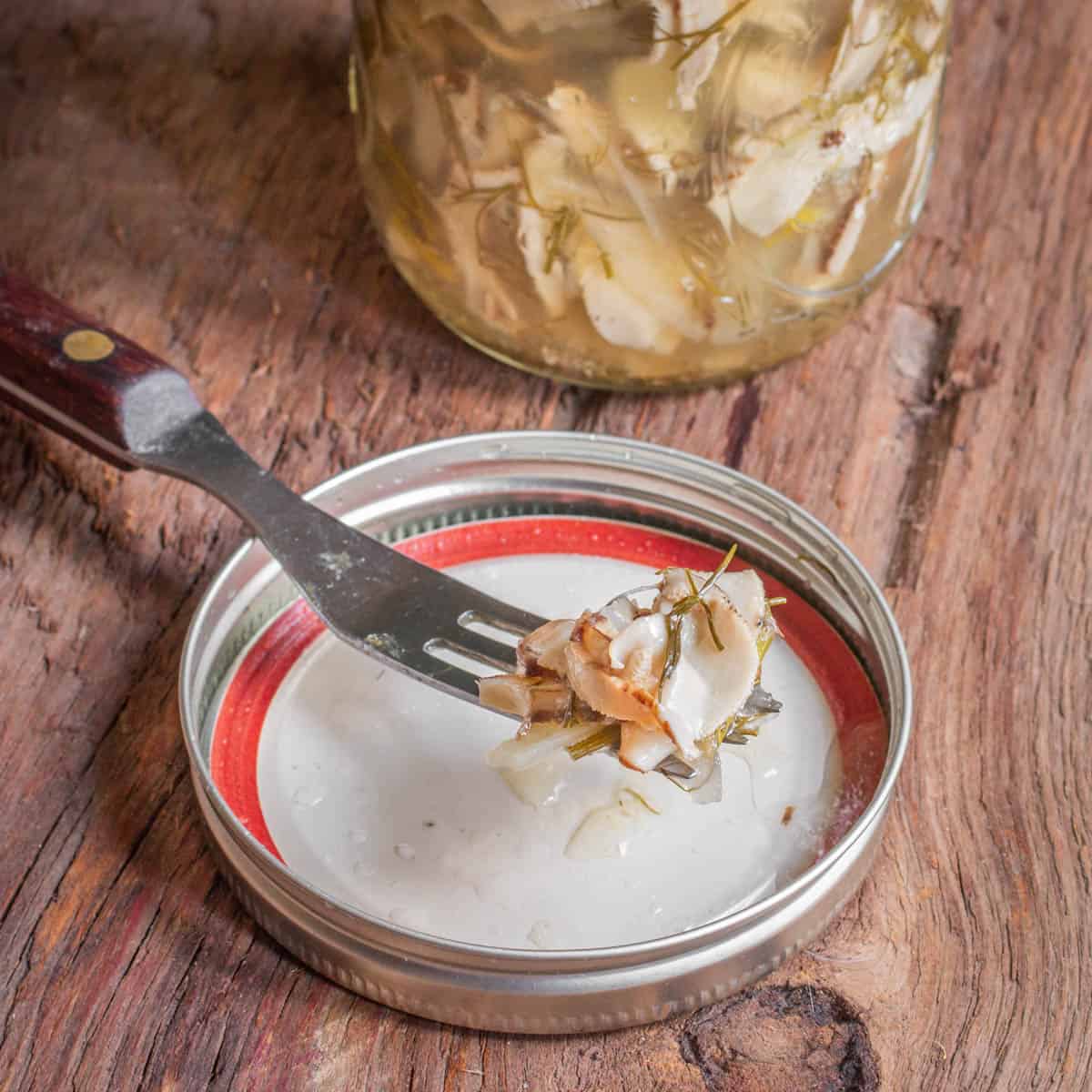
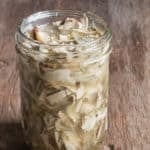
Tim C
Been cooking morels for a long time, but just venturing out & found some very nice pheasant backs that pores scrap of easily (thanks for that tidbit!). When you go to use the mushroom in a recipe, do you scrap off the pores before slicing or leave them on? Great info on this site, btw!!!
Alan Bergo
Tim, the next time you find some pheasant backs, try them both ways and see what you think. Sometimes you can get away without scraping if they're nice and young, and tastes vary between people.
Z
I found some nice tender pheasantbacks and I'm wondering if it would be feasible to make a riff on a cucumber sandwich with it? Obviously not raw, and maybe it would be super weird, but the cucumber element to the scent makes me wonder...
Alan Bergo
Z, of course you could! Just depends on what you consider a cucumber sandwich. Cooked and hot with cress or arugula and bread spread with soft butter might be nice. Hot seems better than cold to me.
Lisa McKarns
I see sugar in the nutrition information, but not in the ingredients or directions. Should I add sugar and if so, how much?
Thanks!
Alan Bergo
Hi Lisa, I don't add any sugar here. For reference, many things contain sugar, carrots for example, which is what the nutrition tracker picks up on.
Cheryl Stewart
Just made this recipe with white wine vinegar (on a budget) using mid sections of a 15.4 pound bondarzewia berkleyi, berkley's polypore, we found at a Michigan rest area near the Indiana border. It was growing off the root of an old oak tree, typical habìtat. Found a great bolete there too. Anyway, my research about whether it is edible and how to prepare the giant polypore, eventually brought me to foragerchef.com. So glad to find your website! Like the Dryad Saddle, Berkleyi get tough with age. This large specimen was tender on the outer tips, so I took the whole thing home. Made broth with lower parts of fans, discarded the stump and a few inches where too tough to cut. Made a Farro dish with tender tips, will try to make the druxelles with remainder, and tried this for the midle, somewhat tough, sections. Canned in water bath, only slightly chewy pickled, great taste, will make again with any similar, edible, polypore mushroom. In comparison, tried to make jerky using middle sections (10 lbs cleaned goes a long way) not sliced thinly, and they were tough as shoe leather like others say; discarded the whole batch. The mandolin is my first, and one of the best kitchen tools ever, might invest in one with more options later. As a newcomer to finding, researching, and cooking with wild mushrooms, I am learning so much from your website, very grateful. Thanks!
Alan Bergo
Nothing wrong with white wine vinegar. Some of the recipes in here, especially older pickles, I made when I was purchasing strictly ingredients from restaurant suppliers that can be harder to come by. Good call on using the Berkleyi here.
Will K.
Pickling, or really marinating, is my favorite way of using the pheasant’s backs. I like to use white wine vinegar, olive oil, oregano, basil, a bay leaf, a crushed clove of garlic and salt & pepper (the mushroom pieces get boiled for about 10 minutes in water with lemon juice squeezed in, then the picking mixture is brought to a boil and poured over). I’ve never actually done the water bath processing on these- I just keep them in the fridge- but they usually get eaten pretty quickly.
Will